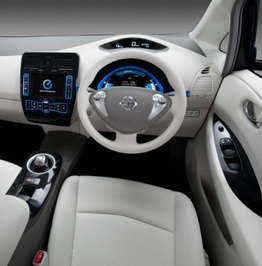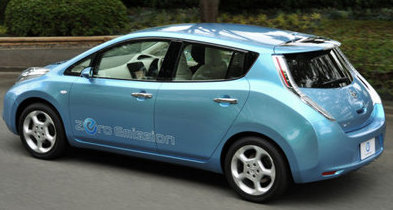
Nissan LEAF was launched on December 3, 2010 in Japan, and is the world’s first mass-marketed and affordable EV. Nissan LEAF delivers a unique driving experience, redefining and setting new standards in handling and linear-feeling acceleration. With a driving range of 200 km (JC08 mode), the vehicle will satisfy the daily needs of most drivers. Spacious enough to accommodate five adults and with quietness comparable with luxury vehicles, comfort has not been compromised. Nissan LEAF also offers customers with a completely new set of values through its advanced IT system.
So on the value site of the product it seems to be well thought through. Beside the fact that it is the first really affordable 100% electric car you can also take on the highway the LEAF is also well thought through on the material site. Partly made from recycled material. The automotive sector is notorious in saying that the materials especially steel of a car cannot be used in automotive again since it needs such a high spec. Well Nissan proved them wrong here.
Sometimes you see Life Cycle Analysis of electric cars showing that with the current electricity mix there is not much reduced environmental impact compared to petrol engines. You need to look at the future however, most countries, even China which runs mostly on coal at the moment, are investing heavily in renewable energy which will reduce the environmental impact a lot.
Other environmental features of the LEAF:
Bumper; The LEAF’s rear and front bumpers are made from used or damaged bumpers that underwent a paint removal and recycleing process
Sound and floor insulation; Nissan developed technology to make fibres from recycled plastics whcih is used as the key component in sound insulation layers in the floor and skin fabric of headlining
Seat fabric and armrest ; The fabric is made of recycled plastic bottles
Back door trim; End of life vehicles are taken apart and plastic components are recycled into Back door trim and door pockets of the LEAF
Nissan Green Program; focuses on reducing waste in every step of the car’s lifecycle from development to disposal.

Comments by our Users
Be the first to write a comment for this item.